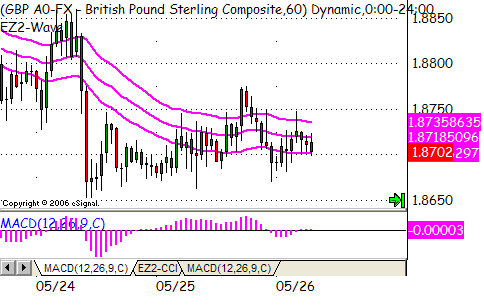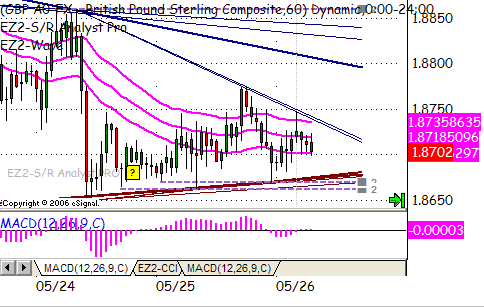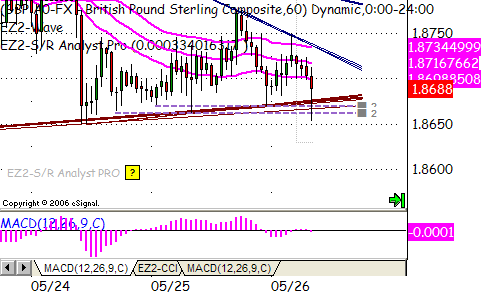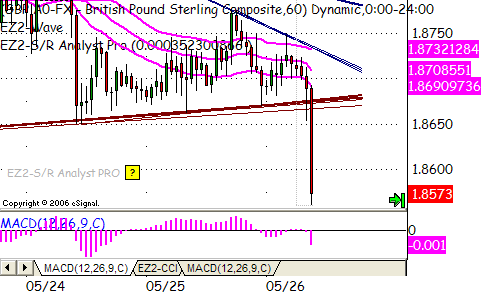Momentum Trading with the Wave and Chart Patterns
It
was only after I embraced market cycles that I truly began to understand what to
do with all the “lines and levels” I had learned to draw on my charts. Early on
as I began teaching myself to trade in the late 1980’s to early 1990’s, there
were not many books available to read about the subject of charting. I found
myself gravitating towards price (instead of news) because my mother was a bit
of a market timer (although not trained nor conscious that she was indeed market
timing).
If you are looking to trade one of the most powerful pullbacks strategies available to traders today, order our newly updated guidebook –The Long Pullbacks Strategy – by clicking here today.
Price and the support, resistance, and trendlines they revealed made sense to me
and I ventured into charting armed with my father’s old engineering graph paper,
drawing my own charts based upon the closing price I would get from my commodity
futures broker. Little did I know it then but work that laid the foundation for
my trading and my two books, “Forex Trading for Maximum Profit” (Wiley, 2004)
and “Thirty Days of Forex Trading” (Wiley, 2006). It was also during this time
I went to college and discovered the books that would forever shape my view of
the markets. Books by Richard Schabacker and Richard Wyckoff were like the
light I was searching for in my quest to become a trader. What is interesting
about the books I read early on was that they were written in the early 1900’s
and are still as true and applicable today as anything on my bookshelf.
The
other pivotal moment in my trading as I alluded to earlier was the introduction
of market cycles to my chart analysis. My bread and butter trades are momentum
trades, and this is not only my favorite setup, but the one I will share here.
So let’s first define what this is to me because there are so many definitions
of this that I want to be sure we are on the same page. Momentum trading is an
entry style that is based upon entering a market as it break out or breaks down
from a sideways market. Sideways markets are cycles of congestion or
consolidation. Congestion is typically a wider ranging sideways market with
higher volatility and a little more erratic support and resistance levels as
compared to consolidation. Consolidation is a narrower sideways market with
firm support and resistance levels; that is, the levels have little variance
between the highs that make up resistance and the low that make up support. It
is during these sideways markets that two of my favorite patterns for momentum
trading develop: triangles and rectangles. Both these sideways market
descriptions were born of the fact that they were initially discussing the stock
market, where there is a buy-side bias. So consolidation is that low volume,
quiet channel where a stock is typically bought with little notice. Congestion
typically follows an uptrend and is an interesting mix of selling muddled with
late-comers to the uptrend who are buying. However since there is not enough
interest and money chasing the market higher, the market levels off into a wider
range, as compared to the accumulation cycle. Now when talking about markets
such as commodity futures and forex, this is not as apparent, especially in the
forex market where the buy-side bias is not as prevalent.
Chart patterns are powerful tools as they are the visual embodiment of price
action on a chart. That being said I think that there is one distinction that
took my analysis of chart patterns to the next level. Early on I would memorize
the criteria, as well as nuances, of chart patterns such as my aforementioned
triangles, rectangles, wedges, flags, head and shoulders, and rounded
tops/bottoms. I would scan charts for hours a day looking for these gems on the
charts. Back then, that meant flipping through large, printed, daily charts
that were mailed to my home once a week. With pen and ruler in hand I would
draw the lines of the patterns I knew. Those were great days – long days.
Starting something new is always exciting and discovering charting patterns only
to see that my analysis was (mostly) right on was a thrill. But still, I wanted
to know what “went wrong” on those patterns that would whipsaw me.
Before entering any market, it is vital that a trader (or investor) know what
market cycle a chart is in. Markets travel in one of four market cycles at any
given time: accumulation (consolidation), distribution (congestion), mark up,
or mark down. Mark up is simply an uptrend and mark down is a downtrend.
Here’s the next challenge every chartist faces: How to consistently determine
which market cycle a chart is in.
Looking back on price, it’s always easy to see what the chart has already
done. The key to charting analysis is being able to determine this as a
market is trending or as the market is heading sideways. I do this quickly and
easily with a simple visual tool I call the Wave. The Wave is made up of three
individual 34 period exponential moving averages – one on the high, one on the
close, and one on the low. These three exponential moving averages create a
“wave” that travels across the chart and by looking at the direction the lines
are traveling I can determine if there is a trend and how strong it is. More
importantly, the Wave tells me when there is no trend at all. And this is
precisely when I look to set up a momentum trade, when there is no trend. The 60
minute chart of the British Pound has a flat, sideways Wave. This gets my
attention because now I will look to draw trendlines, support and resistance and
see if there is a chart pattern on this chart. I will only use congestion and
consolidation patterns like triangles (symmetrical and asymmetrical) and
rectangles in the sideways market cycles that I have identified with the
sideways Wave. This is a key component to using chart patterns. Congestion and
consolidation patterns should only be used in sideways markets.

It
is important to go about identifying chart patterns by finding the building
blocks of the pattern. One thing I realized early on is that I don’t want to
enter trades by looking for the specific patterns, like triangles or head and
shoulders. After all, what is a symmetrical triangle but the convergence of an
uptrend and downtrend. No matter the head and shoulder’s location, inverse or
otherwise, what is a neckline but support or resistance? Once all the trendlines, support and resistance levels are drawn on a chart, only then can I
look for any patterns those lines and levels may have formed. This is a very
different approach as opposed to looking for a specific pattern. Look hard
enough at the clouds and your eyes will find a bunny. Look hard enough at the
charts with a specific pattern in mind and it will appear.

It’s
only after drawing the lines and levels on the chart do I see that a triangle
pattern has formed and this is exactly the kind of pattern I like to see when
setting up momentum trades. Without this triangle pattern there would be no way
to mark and measure the potential breakout or breakdown on the chart. This
pattern — along with the sideways Wave — offers me a momentum set up on this 60
minute chart of the Pound. In a momentum set up I do not carry a bias as to
which side prices may break. The point is that there is no trend and that as a
momentum trader I am waiting for the momentum to show itself to me. I do
however use a confirmation indicator, the MACD Histogram. This allows me to
confirm a move after the prices breaks through either the support or resistance
level. So when prices finally broke through the support of multiple uptrend
lines, as well has support levels, all I have to do is acknowledge the price
trigger of the short and then glance down at the MACD Histogram reading. I use
the MACD Histogram in an “on/off” fashion so in this scenario, the MACD
Histogram simply has to be negative or below the zero line.

While the MACD Histogram is not much below the zero line, in the “on/off” way I
use it, it is negative so the trade is confirmed. As prices break through the
bottom of the triangle chart pattern, think about what is really happening:
support is giving way. In this case that support is an uptrend line and that
uptrend line is half of what makes up this triangle pattern.
One
of the challenges of trading support and resistance levels and chart patterns is
how to determine that the pattern has confirmed an entry. In my opinion, it is
not the job of the pattern to confirm, rather only to trigger. Because I have
the MACD Histogram to confirm the pierce through the pattern, I do not have to
wait for the candle to close; I can enter at the pierce of the pattern thus
optimizing the chart pattern based momentum entry.

The
follow through from a triangle pattern with a sideways Wave is usually swift as
momentum trading is like getting on the base of a trend. Consider that as a
market cycles from trending to sideway to trending again, a sideways market
typically precedes a trend and therefore if the momentum persists in an
organized way, the Wave will also shift from the sideway direction and angle
upward or downward signaling a shift away from the balance of a accumulation or
distribution cycle to a trend. Momentum traders can be effectively traded by:
1. Identifying a chart
with a flat, three o’clock Wave.
2. Drawing all the
uptrends, downtrends, support, and resistance lines that are on the chart and see
if a congestion or consolidation pattern has formed. (The only time you really
need to spend time drawing the lines and levels on a chart is when you see a
sideways Wave).
3. Wait for the price
trigger. This means that you will wait for prices to pierce the support or
resistance levels of the chart pattern, then and only then go to step four.
4. Check the MACD
Histogram for confirmation of the price break direction.
I will be sharing set ups in my regular column
here at TradingMarkets and you will get to follow momentum set ups at work as
well my two other set ups: swings and Wave entries. These set ups
all start with determining the clock angle of the Wave so that I apply the
correct type of set up to the correct market cycle. And while I am
thinking about it, there are some rules that can help you get the most from my
commentary and set ups.
Raghee’s Rules to Successful Trading.
There no escaping that the way you or I live our lives reflects in our trading.
If we are aggressive by nature so will our trading. If we are more cautious or
tentative in life, we will carry that into our trade. Recognizing who you are
is as simple as placing your first trade because you’ll see it up close to the
minute the trade either goes in your favor or moves against you.
There are a few rules that have helped me become,
and more importantly, stay a trader. Trading is my career. It’s not
simply a good year or two but rather the culmination of all my years managing
the risk of being in the market. It’s not just the Forex market that makes
me a trader either. I trade all markets: stocks, futures, and Forex.
If it has a chart and liquidity, I will trade it, if I like what I see.
Diversification to me means that I do not limit myself to one market or even one
style.
Let the charts dictate your stop losses and profit targets.
You now have learned how to begin using trendlines,
support, resistance, Fibonacci Levels, the Wave, “psychological” numbers etc. to
determine where your entries and exits should be. If the risk to reward ratio
are not appropriate for your account, neither is that trade set up.
(Deciding upon the risk to reward ratio requires that you know at what price
level your entry, stop-loss, and initial profit target will be placed. The
distance between your entry and stop-loss is considered your “risk” while the
distance between your entry and initial profit target is your “reward”.)
The market doesn’t care if you are using a percentage or fixed point stop-loss,
these have no bearing on where the market is most likely to move to next, like
support and resistance levels do. If once you have set up your trade, you see
that the nearest chart-based stop-loss is too far away for your account to
absorb, move onto another chart and the next trade. Just remember you must know
your stop-loss level and profit targets before you enter the trade.
Recognize, React, Repeat. This is what
you want to do each day as a trader. Much of your time will, and should, be
spent recognizing the set ups. By doing this you are also training your eyes to
see the difference between good, better, and best trades. The first decision is
whether you have a momentum, swing, or no set up. The last one being the
most significant distinction! Once you recognize what you see on the
charts as one of the set ups, the next step is to react. Reacting means
deciding upon the entry and exit levels that correspond with the set up and as
we know for momentum trades we look for breakouts and breakdowns. For
swing trades we are looking to buy pullback in an uptrend and short bounces in a
downtrend. Finally, we seek to repeat this process as consistently as
possible.
Exit at each predetermined profit target.
We want to exit when we can, not when we have to. I will place
my order — entry or exit — as the market nears my predetermined level or
anytime I have to step away from the computer. There is no hard and fast rule
for entries. I will sometimes leave a standing Limit Order and other times I
will enter as I see my price. For stop-losses and profit targets, I will always
leave standing orders, always! Regarding profit targets: If a typical trade
for your account size is two lots then by the second profit target, you will be
flat. One way I decide how many lots I will enter with is to see how many
profit targets total I can see on the chart. Sometimes there are five and six
targets, other times there are only two or three. Of course, this falls second
to what is right for your account size. And that leads me to the next rule.
Margin accelerates yours winners and losers.
There’s a saying in motorcycling: “Any Gomer can twist a
throttle”. Anyone can push the limit, but it’s few and far between that you
find someone that can bring it back. If you continually trade beyond your
capabilities and risk capital,you will lose. When you trade Forex you are
typically trading 50:1 or 100:1, and I’ve even seen 200:1. While you can make
huge profits, always consider that if the market went against you, you would
lose at the same rate. Margin makes everything move faster and the more margin,
the faster is goes. I’ve seen new riders on motorcycles that had no business
being on a bike with that much horsepower. The lucky ones had a few scares and
learned from it. The unlucky ones pushed the limit and never could bring it
back.
So what’s the answer? We know that trading, like
motorcycling, can be a high- risk activity. Just a like a new rider should
learn the art of riding a motorcycle on a smaller bike with less horsepower, so
should a trader begin with a mini account. I love the idea of mini accounts.
Almost all brokerages offer these types of accounts. Here’s how they work:
You can trade all the majors in a mini account.
The lot size in a mini is 1/10 the size of a full size lot and the pip value is
$1 versus $10. Once you have learned a methodology, back-tested it, and
acquainted yourself with an execution platform, your next step is learning what
it’s like to trade with real money. With a mini account you can benefit
from real market action, the nerves, fear and greed that accompany it, and still
not lose your shirt. At $1 a pip you can make plenty of mistakes (and you
will!) without falling into a financial abyss.
Forget paper trading. It is absolutely
worthless as a trading substitute. If you wanted to acquaint yourself with an
execution platform and practice order execution, fantastic! Go ahead and
paper trade. If you wanted to test a new trading idea, great! Go ahead,
back-test and paper trade the idea. If you want to see how you can trade with an
established methodology, use a mini account. You will never be able to recreate
the feeling of being in a real money trade with paper trading. When you
trade with real money, even in a mini account, you will still feel the burst of
adrenaline when you enter a trade, the exhilaration when you are making money,
and the pit in your stomach when you are losing. These are all kinesthetic
reactions to a visceral activity. When our money is on the line, we are
emotionally invested and we pay better and sharper attention to what we are
doing than if the trade was taking place in the “land of make-believe”.
Even now, I always keep a mini account open because if I find myself on a losing
streak (or I want to experiment with a new trading idea), rather than retreating
from the market completely, I will review my errors and make my comeback…using
my mini account.
Draw trendlines, support and resistance rather then looking for
specific patterns. If you are looking for a specific
pattern you will find it on the charts. It’s like looking at the clouds and
seeing a bunny…we see it because we want to. Find all the lines and levels on a
chart and if a pattern is there you will see it.
Find the trend before you enter any trade.
The scanning step of each trade set up is when we check for trend direction on
each of our time frames. The “Prep Work” step is vital for this very reason.
Finding the trend is directly related to the type of trade you will set up. The
Wave is the best way I have found to make sure I am in the ideal environment for
a momentum or swing trade. When I am swing trading, I want to see the Wave
traveling at noon to two o’clock for buying opportunities and the Wave traveling
at four to six o’clock for shorting opportunities. When I am momentum trading,
the most ideal Wave direction is sideways or three o’clock. There will be
occasions that you will see your trendlines, support and resistance forming
momentum trading patterns like triangles and rectangles, yet you may have an up
or down trending Wave. In these situations you are getting mixed signals and
your best course of action is to look at another time frame to see if the
signals line up more clearly with either a swing or momentum trade.
Use your “and’s” your “or’s” to plan your trade.
Any trade is a process of asking and answering questions. We want everything to
be right when we enter a trade. It reminds me of what my husband taught me
about fishing. I love to go fishing…if I got the Internet on our boat I’d
probably never come back to shore. Sure you can go out and try to catch fish
but you won’t necessarily catch anything just because you dropped your line in
the water. It’s best to know what you’re fishing for and have the right
bait and be out at the time of day the fish feed and in the right
water temperature and fish with the tide. Basically you want to put as
much as you can in your favor so you’re in the right place at the right time.
Great fishermen do this, so do great traders. They line up all the “ands”. If
one or more of the things we look for change, it can affect our plan and
results. For example, we would not go fishing (or we would be less likely to
catch fish) if the water temperature is too low or the tide is wrong
or the bait is wrong or the barometer is dropping.
Don’t chase a trade.
When we trade a twenty-four hour market we will find ourselves missing entries.
It’s inevitable because we must sleep, go out, eat dinner, etc. While we
don’t chase a market, we will use our charts to find the next best way to enter
the trade. Those levels could be based upon Fibonacci Levels, the four
candle average entry, the Wave or even psychological price levels. If we
don’t get our fill at the specified price, we move on. However, since we
have learned to set up both momentum and swing trades, we can use both to help
us out. For example, if we missed a momentum entry and a trend develops
from the initial breakout or breakdown, we can look to see if we can get a swing
set up.
Be thankful. We live in a time that we
have instant access to the markets, quotes, and charts. We have governing
bodies that regulate the markets and brokerages. We live in a time that all the
tools that allow us to be traders are accessible from our homes. Be thankful
for all the opportunities on the charts and in your life.
Raghee Horner is a
trader, author, and money manager. Her two books, “Forex Trading for Maximum
Profit” and “Thirty Days of Forex Trading”, published by Wiley and Sons, are
both bestselling titles. Raghee offers automated charting software and courses
at www.raghee.com. She is also lead trader for
www.gotforex.com.
